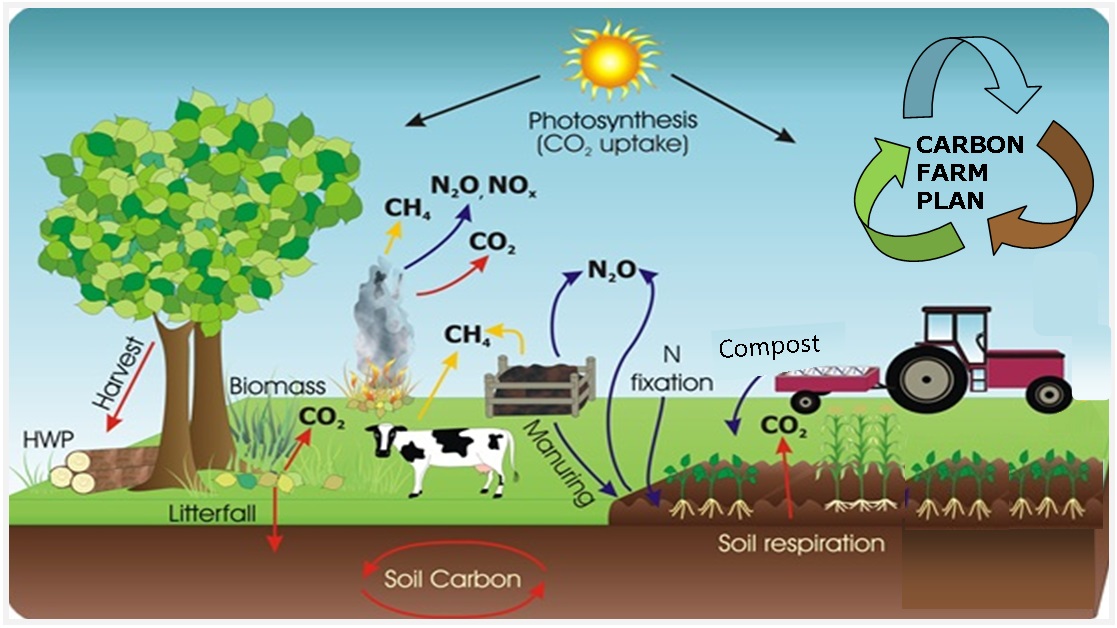Published on: October 11, 2021

CARBON POLICY FOR AGRICULTURE
CARBON POLICY FOR AGRICULTURE

Background
- “CODE RED” to humanity by The Assessment Report of the Intergovernmental Panel on Climate Change (IPCC) Working Group – 1 to meet a 1.5 degree Celsius hotter planet by 2040
- The UK is set to host the 26th UN Climate Change Conference of the Parties (CoP26) in Glasgow from October 31 to November 12 with a view to accelerate action towards the Paris Agreement’s goals.
NEED FOR INDIA
- 22 of the 30 most polluted cities in the world are in India is a major cause of concern. We know well that Delhi is the world’s most polluted capital as per the World Air Quality Report, 2020.
- For those of us residing in Delhi, the winter months become a challenge as stubble burning in adjoining states and low wind speeds take the AQI beyond 300 on average, with some days going as high as 600 to 800, while the safe limit is below 50.
- According to the Global Carbon Atlas, India ranks third in total greenhouse gas emissions by emitting annually around 2.6 billion tonnes (Bt) CO2eq
EMISSIONS
- Sector-wise global emissions show that electricity and heat production and agriculture, forestry and other land use make up 50 per cent of the emissions. But the emissions pie in India owes its largest chunk (44 per cent) to the energy sector, followed by the manufacturing and construction sector (18 per cent), and agriculture, forestry and land use sectors (14 per cent), with the remaining being shared by the transport, industrial processes and waste sectors.
- The share of agriculture in total emissions has gradually declined from 28 per cent in 1994 to 14 per cent in 2016. However, in absolute terms, emissions from agriculture have increased to about 650 Mt CO2 in 2018, which is similar to China’s emissions from agriculture.
- Agricultural emissions in India are primarily from the livestock sector (54.6 per cent) in the form of methane emissions due to enteric fermentation and the use of nitrogenous fertilisers in agricultural soils (19 per cent) which emit nitrous oxides; rice cultivation (17.5 per cent) in anaerobic conditions accounts for a major portion of agricultural emissions followed by livestock management (6.9 per cent) and burning of crop residues (2.1 per cent).
HOW CAN A POLICY HELP
- A carbon policy for agriculture can aim not only to reduce its emissions but also reward farmers through carbon credits which should be globally tradable.
- With the world’s largest livestock population (537 million), India needs better feeding practices with smaller numbers of cattle by raising their productivity.
- Rice cultivation on around 44 million hectares is the other culprit for methane emissions, especially in the irrigated tracts of north-west India.
- While direct seeded rice and alternative wet and dry practices can reduce the carbon footprint in rice fields, the real solution lies in switching areas from rice to maize or other less water-guzzling crops. In this context, opening up corn for ethanol can help not only reduce our huge dependence on crude oil imports but also reduce the carbon footprint. If we can devise a system for rewarding farmers for this switch by making corn more profitable than paddy, it can be a win-win situation.
- If we develop global carbon markets, India needs to clearly spell out in its policy how it would adjust carbon credits when it sells to polluting industries abroad so that emission reductions are not double counted in India and the country buying carbon credits.
- Agricultural soils are the largest single source of nitrous oxide (N2O) emissions in the national inventory. Nitrous oxide emissions from use of nitrogen-fertiliser increased by approximately 358 per cent during 1980-81 to 2014-15, growing at a statistically significant rate of 5,100 tonnes per year. An alternative for better and efficient fertiliser use would be to promote fertigation and subsidise soluble fertilisers.
- Government should incentivise and give subsidies on drips for fertigation, switching away from rice to corn or less water-intensive crops, and promoting soluble fertilisers at the same rate of subsidy as granular urea.

